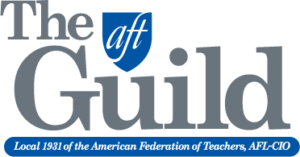In a few days we’ll celebrate Labor Day, but how many of our students, or even us, will have any idea where the holiday came from or what it celebrates? The first Labor Day was celebrated on Tuesday, September 5th, 1882 in New York City and was proposed by the Central Labor Union at a time when American workers were struggling for basic rights such as the eight-hour day. The CLU moved the “workingman’s holiday” to the first Monday in September in 1883 and urged other unions to celebrate the date as well. The movement grew throughout the 1880s, along with the American labor movement itself with 23 states passing legislation recognizing Labor Day as a holiday. By 1894 Congress followed suit and Labor Day became a national holiday.
On that date, in 1894, most American workers still did not have an eight-hour day, the right to organize, social security, health care, or even a living wage. Indeed, just being a unionist could get you fired or even killed in some quarters. During the Progressive era, union activism began to bring some basic reforms, but it was not until the New Deal era in the 1930s that most of the basic rights we take for granted were won. And even then, many workers, like those in the fields and in the public sector where left out. It wasn’t until the 1960s that public sector workers got the right to organize at the federal level and that only became true for those of us in education in California in the 1970s.
For much of the 20th century, Labor Day was a real celebration of American workers with parades, picnics, and speeches dedicated to the struggles and triumphs of American unions. Slowly, as the American Labor Movement declined and unionized workers were assailed and successfully demonized by the right, the meaning of the holiday has been largely erased from the public memory. People enjoy their weekends but they’ve forgotten or never learned about the struggles that made our weekends even possible. We lose this history at our peril. As the current state budget crisis illustrates, union workers can be easily blamed for problems that they didn’t create when the public is largely ignorant of even recent history. If the zeitgeist seems to be “Let’s drag them down into the hole we’re in,” perhaps it’s because folks don’t hear ideas like, “An injury to one is an injury to all.”
This Labor Day, why not do something about it? Wear a union shirt or button to work this Thursday, September 3rd before Labor Day weekend and tell your students you are a union member (stop by the union office or contact Tina at 619-640-1155 if you’d like a free AFT shirt to wear!). Or, better yet, take a moment to discuss the meaning of the holiday or incorporate some union history into your class if appropriate.
If you don’t know much about labor history, here are a few quick and easy resources that can help you get started:
1) Labor History Links: www.laborhistorylinks.niu.edu
This site is the most comprehensive on the web, complete with a page for teachers.
2) AFL-CIO: http://www.aflcio.org/aboutus/history/history/links.cfm
The AFL-CIO page mentions Labor History Links but also has links to other websites and a huge amount of information on current union issues and politics.
3) CFT: www.cft.org.
First click on the “California Labor History” link on the left side of the homepage and look for information on “Golden Lands/Working Hands:Golden Lands, Working Hands,” a ten-part, three hour video series. This documentary introduces students, union members and the general public to California labor history in order to encourage understanding of the state’s diverse working populations and their efforts to find common ground in struggles for social justice. It is meant to be shown one part at a time in conjunction with reading materials and lesson plans suitable for high school students, and for union members in new member programs. Also useful is the information on CFT’s Labor in the Schools program. Go to the “Committees” page to find “Labor in the Schools.”
4) While Labor History Links is full of fine, comprehensive bibliographies I would also recommend two books for those of you interested in international labor issues: David Bacon’s Children of NAFTA and David Bales Disposable People: The New Slavery in the Global Economy.
In Solidarity,
Jim Miller, AFT Political Action VP/Labor Studies instructor
